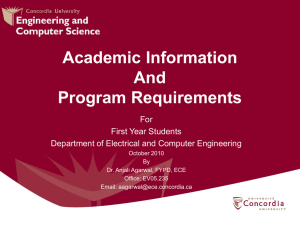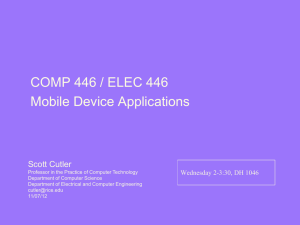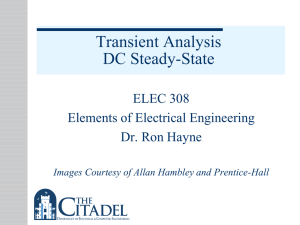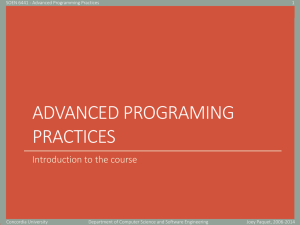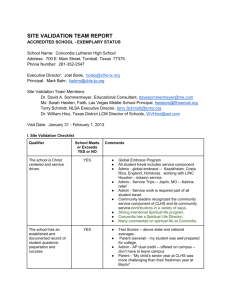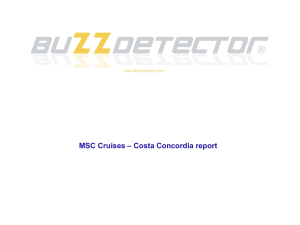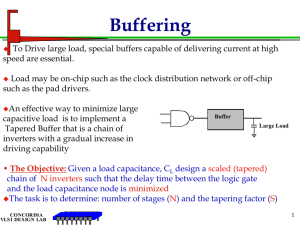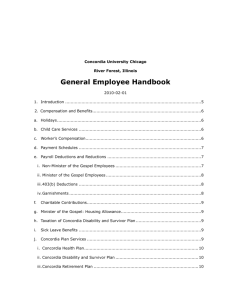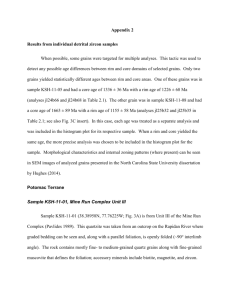Chapter 2 - Concordia University
advertisement
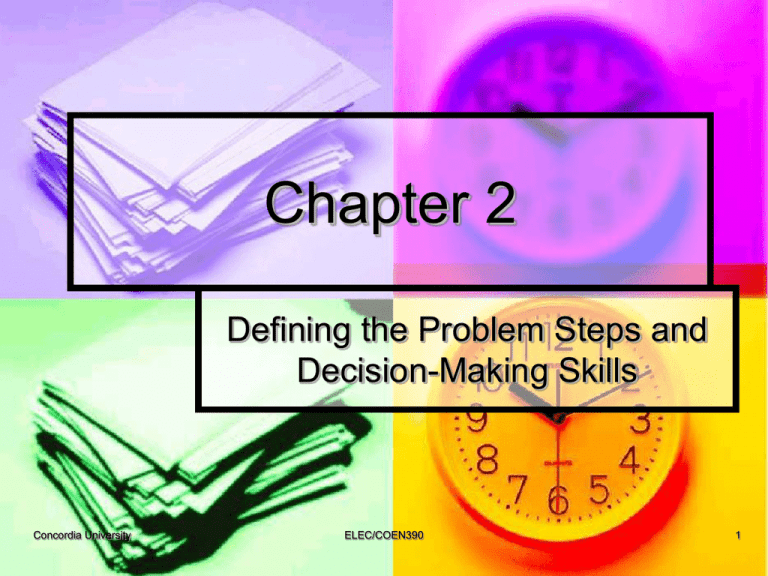
Chapter 2 Defining the Problem Steps and Decision-Making Skills Concordia University ELEC/COEN390 1 Today’s Menu Defining a problem statement Surveying Concordia University Existing Designs Customer Needs Writing a literature survey of existing designs is important Understanding the needs of the customer is essential Actually writing a “good” problem statement is a skill that requires and precise and questioning mind ELEC/COEN390 2 Today’s Menu - continued Concordia University Identifying functional requirements using an Objective Tree Recognizing constraints and limitations Using Sketches to illuminate idea Iterative definition of the problem Defining a team and a schedule ELEC/COEN390 3 2.1 Forming the Problem Statement A problem statement is a written description of the problem to be solved Has open-ended >1 solution Is loosely structured and bound by constraints Is part of a systems’ context Is usually accompanied by sketches Concordia University ELEC/COEN390 4 Figure 2.1 (Page 28) Concordia University ELEC/COEN390 5 2.1.1 Research and Data Gathering Information gathering is conducted via traditional sources and reliable web pages It forms the basis of a literature survey Conducting surveys among potential users provides a better understanding of the market Concordia University ELEC/COEN390 6 Concordia University ELEC/COEN390 7 Concordia University ELEC/COEN390 Figure 2.2 (Page 31) 8 Figure 2.3 (Page 32) Concordia University ELEC/COEN390 9 2.1.2 Eliminating Biases and Overcoming Assumptions No biases means having a systematic exploration of the whole space of feasible designs Example Designing a mechanical arm that will pick apples from a tree Concordia University “Why does one need to pick apples off the tree?” (They could be shaken off the tree instead.) “Why do apple trees have to be the shape they are?” (Perhaps the shape of the tree could be modified to make it easier to remove apples.) “Why does the arm have to go up and down with every apple it (The apple could be dropped into a chute or container.) ELEC/COEN390 picks?” 10 2.1.3 Analyzing Key Phrases Starting with statements biased by the customer’s and designer’s perceptions & preconceptions Redefining the problem might uncover the real problem (e.g. tomato picker example) Shatter habitual patterns of thought, by defining problems in increasing detail Look for justifications in the problem statement hint at the real problem Understand the context in order to arrive at precise problems definition Concordia University ELEC/COEN390 11 2.2 Identifying Functional Requirements Functional requirements are the “what” of a design NOT the “how” to design Go from start to end as fast as possible (on the second run) with the cheapest robot (in terms of components used) NOT Concordia University Build a robot that goes through a maze twice, mapping the maze on the first run then making use of that information to determine and traverse the shortest route on the second run ELEC/COEN390 12 In Summary (1/2), A well-written problem statement is the door to good solution development Part of defining the problem is: Concordia University Reviewing existing designs Understanding customer requirements In the final analysis, a well-written problem statement should define the space of acceptable designs ELEC/COEN390 13 2.2.1 Using Objective Trees Concordia University Successful problem definitions involve breaking a problem into smaller ones This can be done by constructing an objective tree An objective tree grows through iterative addition of more details ELEC/COEN390 14 Figure 2.5 (Page 37) Concordia University ELEC/COEN390 15 2.3 Recognizing Constraints and Limitations The “what” and “how” of a design are shaped in part by the “but” and “however” of constraints and limits Concordia University ELEC/COEN390 16 Figure 2.6 (Page 38) Concordia University ELEC/COEN390 17 2.3.1 Using Sketches Drawing pictures of the problem can help you see the problem from a different perspective It can illuminate new constraints and limitations that were not apparent before 2.3.2 Clarifying the Problem Over Time New Concordia University information is discovered throughout the iterative design process Discovering problems often leads to corrections ELEC/COEN390 18 2.4 Defining a Schedule and Forming a Team Concordia University Long-term planning follows problem identification Team failure often leads to project failure True mutual dependency is a success key for all the team ELEC/COEN390 19 Figure 2.8 (Page 41) Concordia University ELEC/COEN390 20 In Summary (2/2), Concordia University An objective trees is a tool for refining functional requirements Identifying and incorporating constraints into the problem is important Visual aides always help Once the problem is defined, a team and an initial schedule can be formed ELEC/COEN390 21
